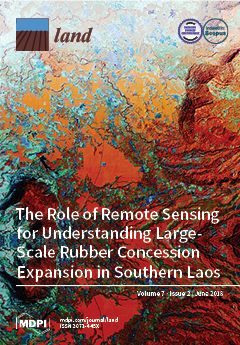Resource information
Bogotá, the rapidly growing center of an emerging economy in the northern part of South America, is located within a biodiversity hotspot in the tropical Andes. The surrounding mountains harbor the ecosystems Páramo and Bosque Altoandino whose high water retention capacity serves as a “natural water tower” for the city’s freshwater supply. Since Bogotá is steadily growing, the city spreads into its peri-urban area, thus threatening its proximal ecosystems. In this study, the land use and land cover change (LULCC) of Bogotá’s surrounding area is analyzed with random forest algorithms for the period 1989 to 2016. The basin of the Rio Tunjuelo, a subbasin of the Rio Bogotá, was selected for analysis, as it is typical for the entire area in terms of relief, land use and land cover. A multiple logistic regression analysis is applied to identify different determining factors of the changes. LULCC analysis of the Rio Tunjuelo basin shows an ongoing but abating southward spread of Bogotá’s outer rim, an increase of agricultural land, and decrease of natural vegetation. After an initial heavily spatial spread of urbanization in the early 1990s, the speed of urban spread declined in the past years. Statistical analysis implies that the defined natural vegetation classes must be considered as one spatial entity. The probability for their change increases with decreasing distance to established agricultural areas, which indicates human impact as a relevant factor for LULCC. Generally, the explained deviance (D2) is low and hence it is presumed that the LULCC determining factors are not predominantly found among environmental parameters.


